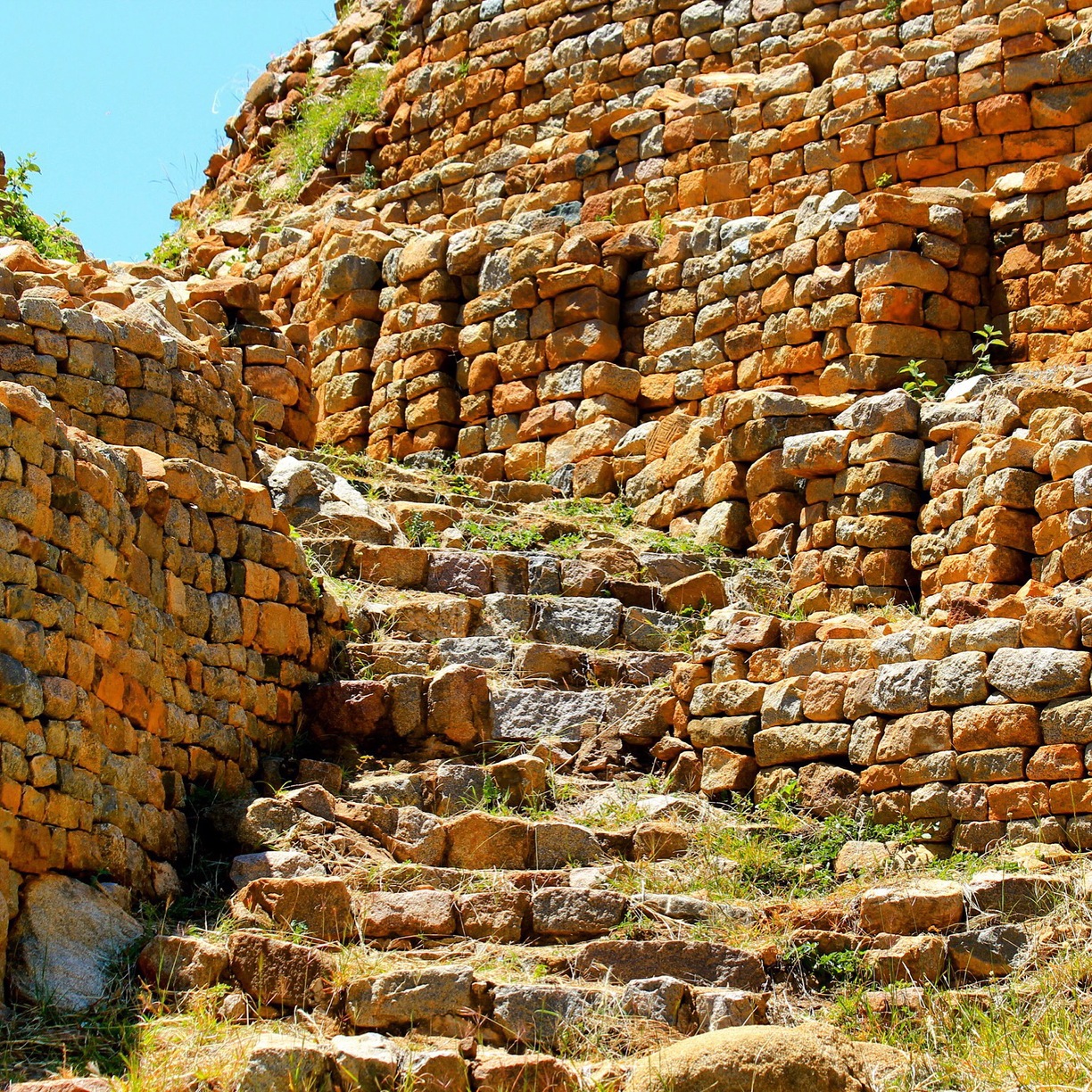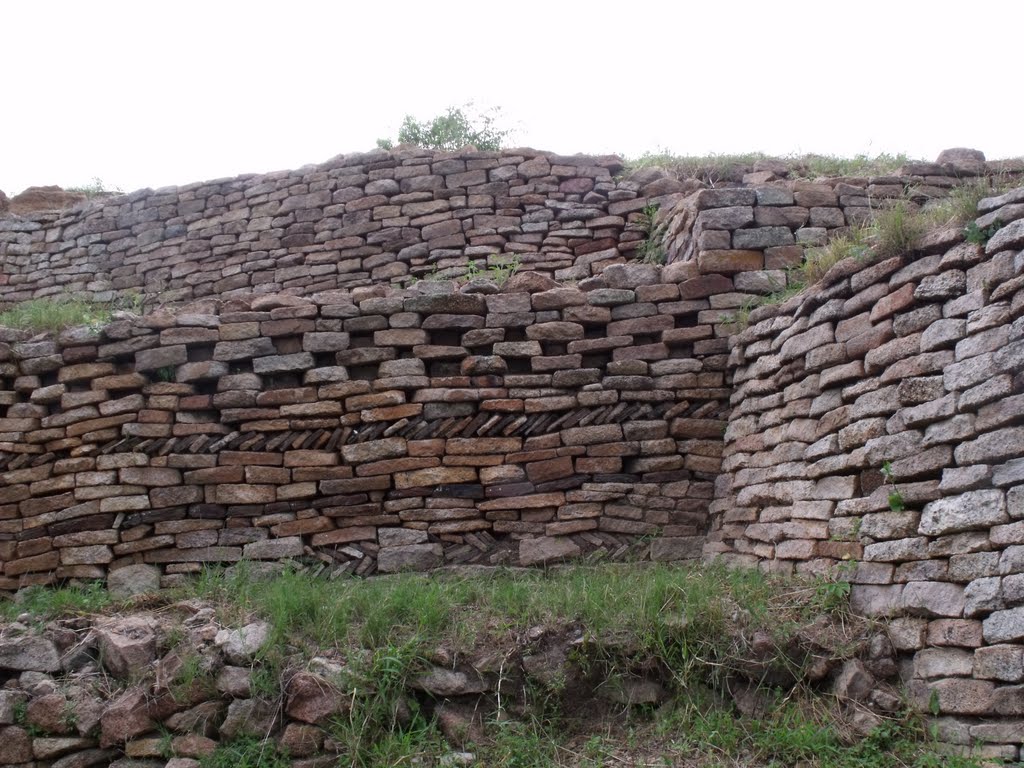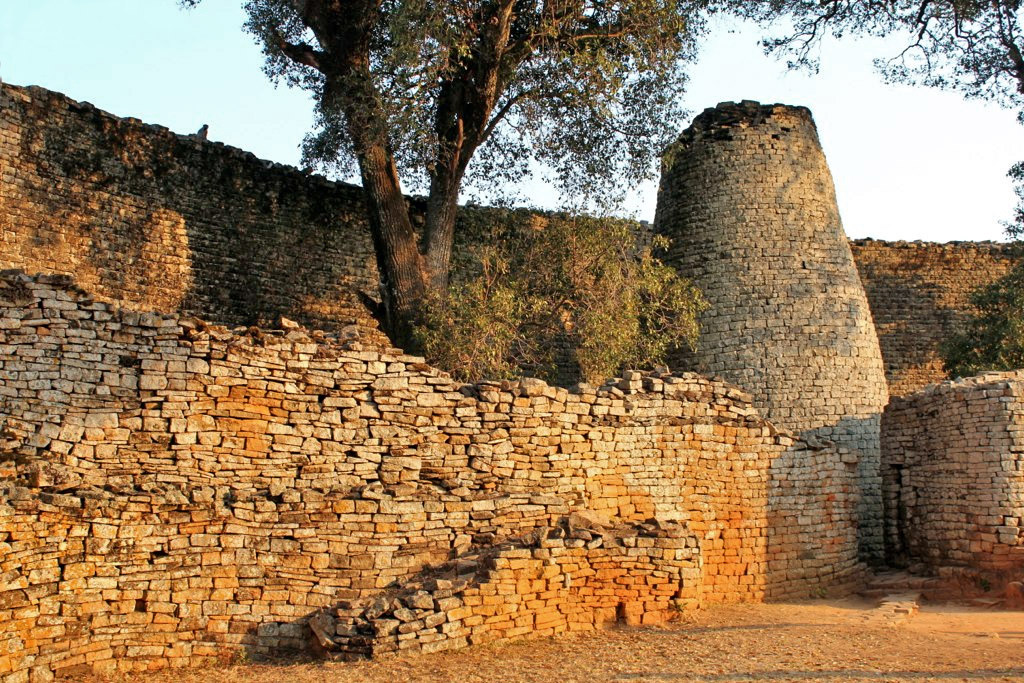Khami (also written as Khame, Kame or Kami) is a ruined city located 22 kilometres west of Bulawayo, in Zimbabwe. It was once the capital of the Kingdom of Butua of the Torwa dynasty. It is now a national monument, and became a UNESCO World Heritage Site in 1986.
The site is located to the west of the Khami River and downstream from the dam built in 1928-29. It is scattered over more than 2 km, from Passage Ruin to North Ruin. The archaeological zone, which was protected against plundering thanks to its 'Royal Reserve' status until the death of King Lobengula in 1893, was not seriously disturbed by the rampant prospecting of the treasure hunters of the Rhodesia Ancient Ruins Company Ltd. It was explored in the 20th century by David Randall-MacIver, Gertrude Caton-Thompson and more recently by K. R. Robinson, whose work has provided in-depth knowledge of the site's history.
Although the site is located in a zone where a fairly important human presence can be traced back roughly 100,000 years, it does not appear to have been inhabited continuously until the Iron Age. According to radiocarbon dating methods the city grew between around 1450 and 1650, which fully confirms the study carried out on built-up structures and small archaeological artefacts.
As is the case in Great Zimbabwe, here several sectors can be distinguished that are clearly differentiated in terms of use. The chief's residence (mambo) was located towards the north, on the Hill Ruins site, which is a hill created largely of alluvial land used to level the terraces, contained by bearing walls. In this sector some highly significant imported goods were found: 16th century Rhineland stoneware, Ming porcelain pieces which date back to the reign of Wan-Li (1573-1691), Portuguese imitations of 17th-century Chinese porcelain, 17th-century Spanish silverware, etc.
There is a possibility that Khami was visited by Portuguese merchants and even missionaries, because a monumental cross consisting of small blocks of granite can still be seen traced on the rocky ground of Cross Hill, a small hillock immediately north of the mambo residence.
The population of Khami was spread over several hectares and lived in huts made from cob surrounded by a series of granite walls. The typology of the fences and walls is similar to that of the latest constructions in Great Zimbabwe. Worthy of note are the many decorative friezes, having chevron and checkered patterns, and the great number of narrow passageways and deambulatory galleries, not all of which are covered.













